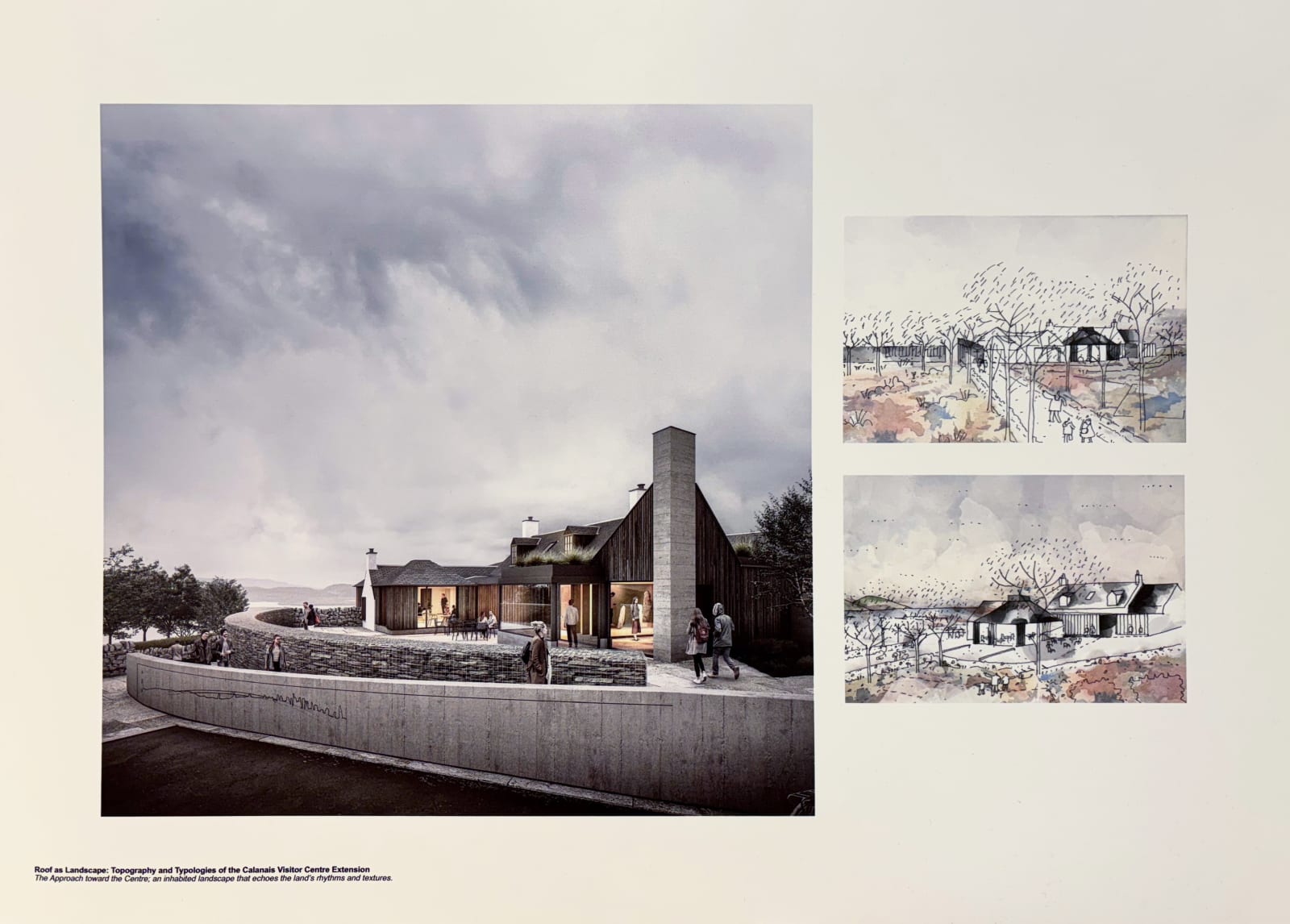Paul Smith, Elena Mileva, Ian Alexander, Katie Allan, Nick Dalgety for jmarchitects
Roof as Landscape: Topography and Typologies of Calanais Visitor Centre II, 2025
Digital print on mount
70 x 50 cm
£ 500.00
Price for print only. Model NFS. This series explores the Calanais Visitor Centre on the Isle of Lewis, focusing on our vernacular approach to roof typologies as a landscape in...
Price for print only. Model NFS.
This series explores the Calanais Visitor Centre on the Isle of Lewis, focusing on our vernacular approach to roof typologies as a landscape in their own right. The proposed extension aims to strengthen the Centre's role as a key heritage destination, integrating new structures with existing buildings while respecting local architectural traditions. The design fosters a deeper connection to the surrounding ritual landscape, creating a building that feels inherently linked to this significant heritage site. In response to the importance of the standing stones, the extension is positioned to harmonise with the landscape and complement the existing structures. Framed by a circular boundary wall, the design unites architecture with the natural context. Prioritising the use of existing structures, the design minimises disruption and preserves the site's integrity. Drawing inspiration from traditional farmsteads, it incorporates a variety of roof forms that reflect the region%u2019s vernacular architecture, offering a modern reinterpretation of these forms. This series of studies reimagines farmstead roof typologies through an abstracted roofscape model, enhanced by professional visuals and hand sketches, transforming traditional forms into a topographical landscape that reflects the unique character of the region.
This series explores the Calanais Visitor Centre on the Isle of Lewis, focusing on our vernacular approach to roof typologies as a landscape in their own right. The proposed extension aims to strengthen the Centre's role as a key heritage destination, integrating new structures with existing buildings while respecting local architectural traditions. The design fosters a deeper connection to the surrounding ritual landscape, creating a building that feels inherently linked to this significant heritage site. In response to the importance of the standing stones, the extension is positioned to harmonise with the landscape and complement the existing structures. Framed by a circular boundary wall, the design unites architecture with the natural context. Prioritising the use of existing structures, the design minimises disruption and preserves the site's integrity. Drawing inspiration from traditional farmsteads, it incorporates a variety of roof forms that reflect the region%u2019s vernacular architecture, offering a modern reinterpretation of these forms. This series of studies reimagines farmstead roof typologies through an abstracted roofscape model, enhanced by professional visuals and hand sketches, transforming traditional forms into a topographical landscape that reflects the unique character of the region.
Join our mailing list
Join our email list to be the first to hear about RSA exhibitions, events and opportunities.
* denotes required fields
We will process the personal data you have supplied in accordance with our privacy policy (available on request). You can unsubscribe or change your preferences at any time by clicking the link in our emails.

